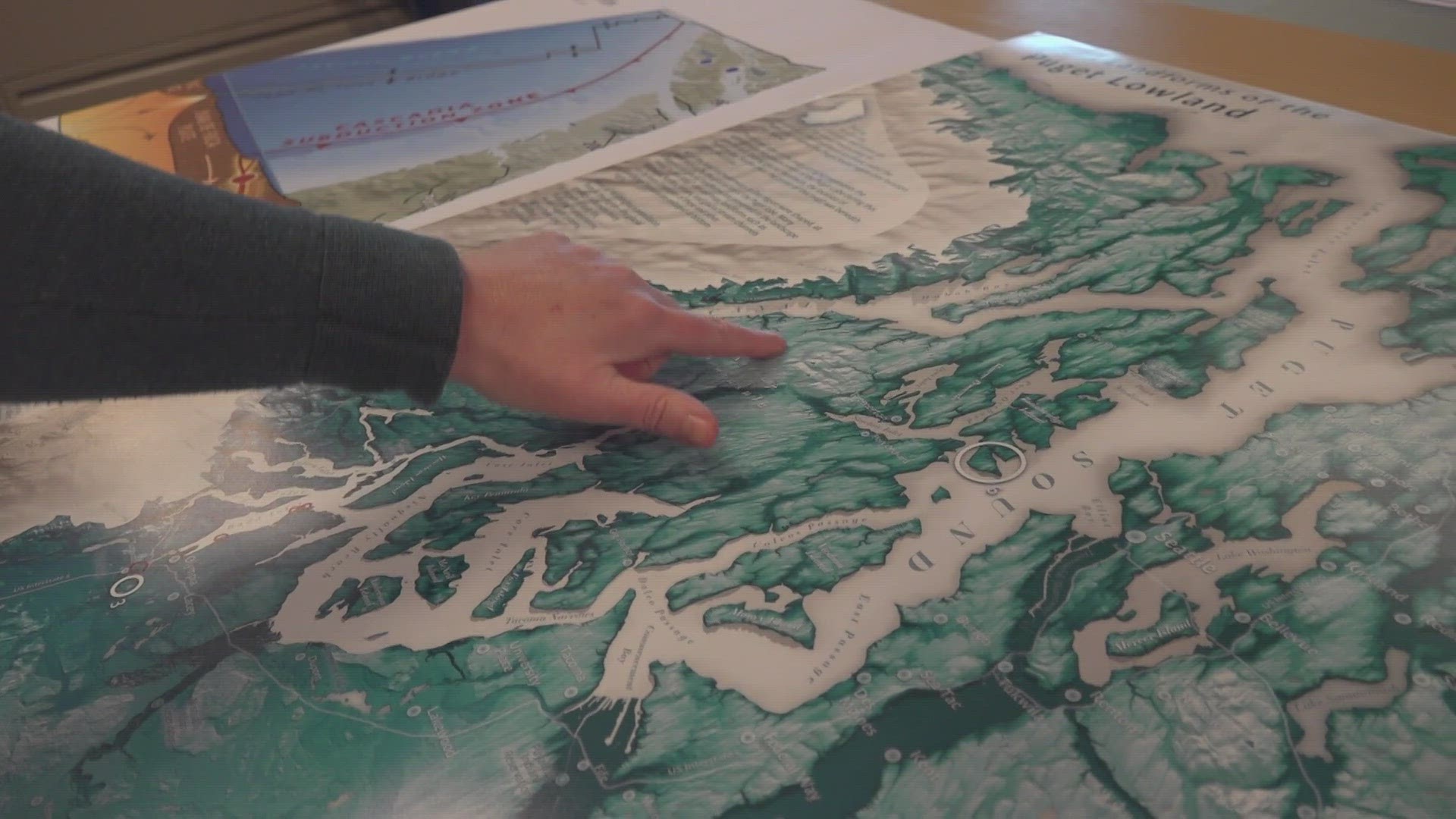SEATTLE — A new study published in the journal Tectonics reveals new details about how the Seattle fault zone may have developed more than 50 million years ago.
According to the study, a rock layer called "Siletzia" was pushed in part up and over ancient North America and in part down and under it, and a tear between the two eventually became the "proto-Seattle fault."
"Siletzia verged onto the continent 50 million years ago, and the Seattle fault is a fault that creates earthquakes in the modern day, in the modern tectonic environment," said Megan Anderson, lead author on the study and an earthquake geologist with the Washington Department of Natural Resources.
The "Seattle fault" is a zone of faults stretching east to west, putting more than 4 million people at risk of earthquakes in Washington state.
"Knowing its full history helps us understand how active was the fault over time and therefore help us create forecasts of how it might be active into the future," Anderson said.
Researchers assessed "small changes in Earth's gravity and magnetic fields to create images of the Earth's subsurface," according to the study. The rocks formed around 50 million years ago when islands collided with the edge of North America, adding the "Siletzia" layer to the continent. They also learned more about the types of rock in the area, finding a looser form of sediment that could make seismic ground-shaking stronger.
"We think what happened is, as this raft of material came into the subduction zone, it got stuck; usually in a subduction zone, one plate goes down beneath the other, but this trunk didn't want to go down in the subduction zone," Anderson said. "Part of it started to go down in but the other went up and over the existing plate, over North America, and as it did it created this tear between the two parts and we think that formed the place where the modern day Seattle fault made its home."
Much attention is rightfully paid to the Cascadia Subduction Zone and the powerful earthquakes that could affect the coast from California to Canada. But the City of Seattle said shaking could be much more violent and prolonged during a Seattle fault quake, where more than 1,100 unreinforced buildings could collapse, bridges could be damaged and fires could spark.
"To have a better understanding of the full history of the Seattle fault, including its earliest time frame, and knowing its full history helps us understand how active was the fault over time and therefore help us create forecasts of how it might be active into the future," Anderson said.

